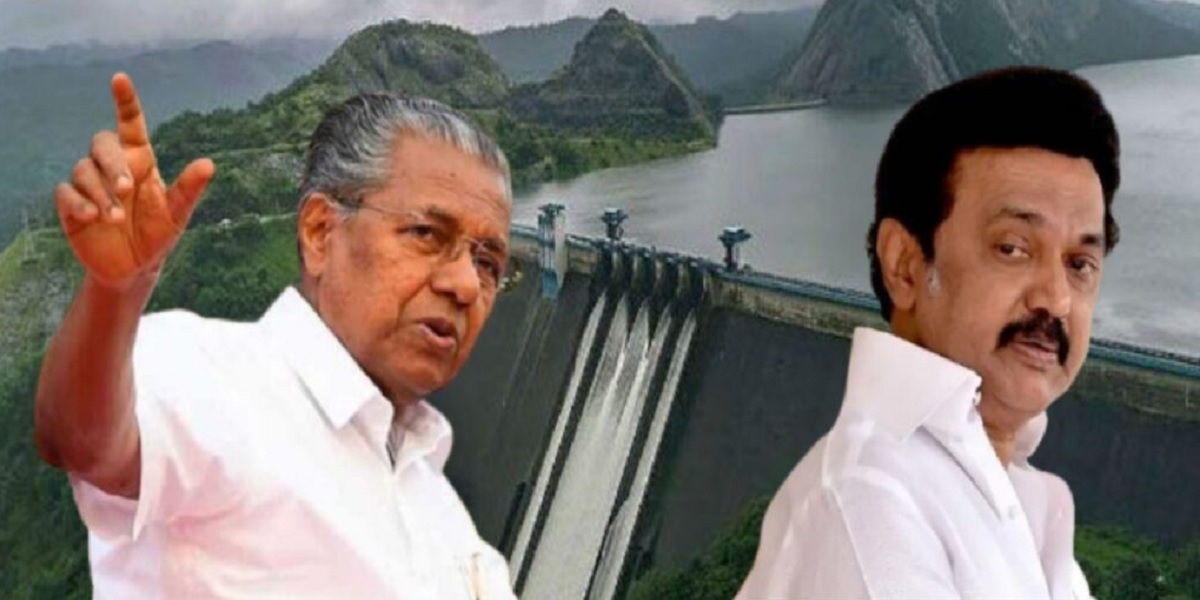Bench praises the engineering skills of those who constructed the dam and draws comparison with character from Asterix and Obelix who fears “the sky will fall” when counsel argued that the monsoon was near and there were fears for the stability of the dam built in 1895.
Published Jan 29, 2025 | 8:00 AM ⚊ Updated Jan 29, 2025 | 8:00 AM

Decades-long dispute between Kerala and Tamil Nadu over Mullaperiyar Dam.(img-https://thecommunemag.com/wp-content/uploads/2024/12/Stalin-To-Meet-Vijayan-In-Vaikom-On-Mullaperiyar-Dam-Maintenance-Issue-1024x576.jpg)
On Tuesday, 28 January, the Supreme Court bench comprising Justices Rishikesh Roy and SVN Bhatti heard the petition seeking urgent hearing of the safety concerns over the 130-year-old Mullaperiyar dam in Idukki district of Kerala, given that the monsoon was impending.
The SC bench asked the counsel for the petitioners, private individuals from Kerala, how many monsoons had passed since the dam was constructed – the counsel for the petitioners responded that the dam is over 100 years old.
The petitioners had submitted that the dam was over 100 years old, and that 15 lakh people were at risk if the dam were to collapse. The life of the dam was estimated at the time of its commissioning as 50 years.
Justice Rishikesh Roy has previously served as the Chief Justice of the Kerala High Court. Justice SVN Bhatti is former Acting Chief Justice of the Kerala High Court.
The bench remarked: “We have also worked in the same Kerala where, now, fear propaganda is being circulated about the dam collapsing. The dam has withstood the test of time…, and we should acknowledge and thank the people behind such remarkable architecture.”
Justice Roy observed that the dam had outlasted its projected life twice over, and that people had been living in fear of the dam collapsing for over 100 years. Justice Roy held that the dam had withstood so many monsoons and would outlast more monsoons while awaiting hearing.
The Supreme Court even orally drew a comparison with the fear of the Gauls in cartoon Asterix & Obelix, that “the sky will fall.”
During the proceedings, the bench addressed concerns raised by petitioners about the potential risk of the dam collapsing. Residents living near its periphery have been in constant fear, vigilant for signs of potential structural failure.
The court described these fears as “propaganda.”
Justice Roy remarked that the dam had survived for 130 years, a feat that reflects the remarkable engineering behind its construction.
The bench said that while safety concerns must be addressed with technical scrutiny, the dam’s enduring structural integrity is a testament to the skill and foresight of its creators.
Also read: Union Budget 2025: Southern states seek economic relief, infrastructure development, and inclusivity
Senior advocate Jaideep Gupta and advocate G. Prakash, representing the state government, informed the Court that several petitions regarding the dam’s safety were currently being reviewed by a three-judge bench.
As a result, the two-judge bench decided to transfer the petition to the larger bench for a thorough evaluation.
The three-judge bench of the Supreme Court will now assess all pending petitions concerning the Mullaperiyar Dam’s safety.
A seven-member monitoring committee has been formed to oversee the safety of the Mullaperiyar Dam, now under the jurisdiction of the National Dam Safety Authority (NDSA).
Chaired by the NDSA head, the panel includes additional chief secretaries from Kerala and Tamil Nadu, the chairpersons of Tamil Nadu’s Cauvery Cell and Kerala’s Irrigation Department, and a representative from the Centre for Excellence at Indian Institute of Science, Bengaluru.
After an earthquake in 1979, the dam developed leaks and cracks. After tremors in the region in 2011 too, there were concerns about the safety of the dam.
In 2021, United Nations University’s Institute for Water, Environment and Health pointed to structural issues and warned that a dam-break could not be ruled out.
That report came after the climate change-induced heavy rains that lashed Kerala in 2018 and 2019; the dam sits in a seismically sensitive zone. Kerala has called for decommissioning the dam, and suggested that a new dam be built, citing the age of the current structure.
In 2006, the Kerala assembly passed a Dam Safety Act that requires the state to decommission unsafe structures.
The Mullaperiyar dam is over 365 metres long and 53 metres high; it is one of the oldest in the world, well past the 50 years considered to be the period when dams are safe.
The dam was built on the River Periyar by the pre-independence Madras State. The British government struck a 999-year lease deed with the Travancore State, to lease 3,500 hectares to Madras and grant it rights over the water in the reservoir and irrigation rights for that long period of time.
Although the river originates in the Western Ghats of Kerala and flows into the Arabian Sea, Tamil Nadu, as provided in the agreement, has been managing the dam and diverting water to irrigate fields in drought-prone Theni, Madhurai, Sivaganga, Ramanathapuram and Dindigul districts.
It is hard for even experts to estimate the strength of the dam with accuracy since the dam is so old and the material with which it was built has aged – the walls are covered with rubble masonry which is supposed to protect it from the pressure of water; the core is built with hydraulic lime and surkhi, sand, sugar and crushed bricks have all been used. It is the only dam of its kind in the world.
AV George, a geology professor from a college in Kerala has contended that the repairs on the dam have only served to make it more vulnerable; over the years, a large quantity of the lime in the core of the dam has leaked out; cracks and seepage have made the structure damp and weak.
(Edited by Rosamma Thomas)
